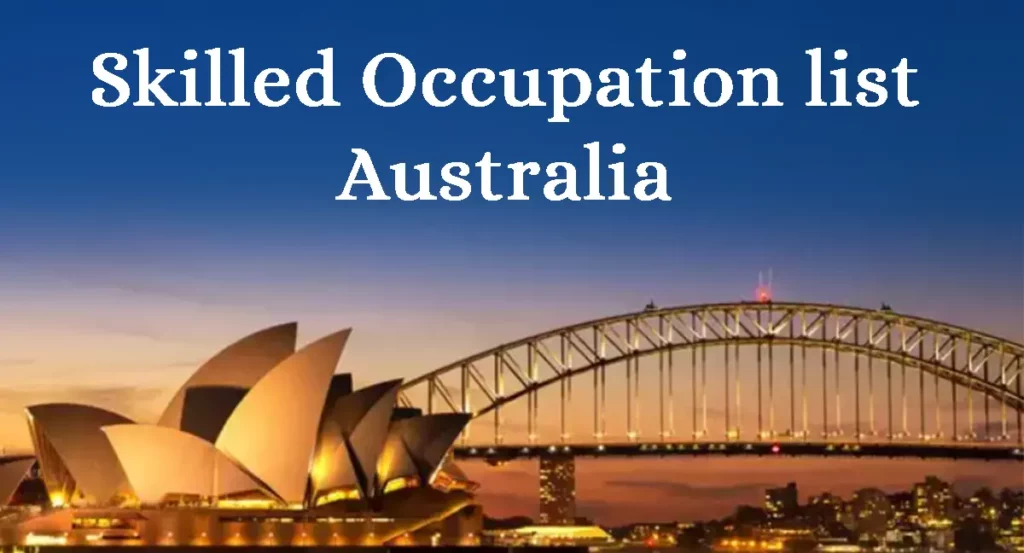
Table of Content:
- What is the Skilled Occupation List (SOL)?
- Types of Skilled Occupation Lists
- How do you check if your occupation is on the SOL?
- Factors Affecting the SOL
- State and Territory-Specific SOLs
- Tips for Maximizing Your Chances
- Skilled occupation list Australia- Jobs
- Eligibility for skilled migration and state nomination
- Frequently Asked Questions
Australia has many skilled workers migrating from around the globe. For one to qualify for a migration visa under this category, their occupation ought to appear in the Skilled Occupation List (SOL). The country often revises this list according to the skills currently lacking there.
What is the Skilled Occupation List (SOL)?
The SOL is a comprehensive list of occupations that Australia requires to fill skill gaps in its workforce. It’s a crucial document for anyone considering skilled migration to Australia.
Types of Skilled Occupation Lists
There are primarily two types of SOLs:
- Medium and Long-term Strategic Skills List (MLTSSL): This list includes occupations in high demand across Australia.
- Short-term Skilled Occupation List (STSOL): This list features occupations that have short-term skill shortages.
- Skilled Independent Visa (Subclass 189)
- Skilled Nominated Visa (Subclass 190)
- Skilled Work Regional (Provisional) Visa (Subclass 491)
- Temporary Skill Shortage (TSS) Visa (Subclass 482)
- Employer Nomination Scheme (Subclass 186)
How do you check if your occupation is on the SOL?
You can easily check if your occupation is on the SOL by visiting the Australian Government’s Department of Home Affairs website.
Factors Affecting the SOL
Several factors influence the inclusion and removal of occupations from the SOL:
- Labor market demand: High-demand occupations are more likely to be included.
- Economic conditions: Economic fluctuations can impact the SOL.
- Government policies: Changes in immigration policies can affect the list.
State and Territory-Specific SOLs
While the federal government maintains the MLTSSL and STSOL, individual states and territories have their own occupation lists for state-sponsored visas.
Tips for Maximizing Your Chances
- Regularly check the SOL: Keep yourself updated on any changes.
- Improve your skills: Enhance your qualifications to increase your employability.
- Consider regional areas: Many regional occupations are in high demand.
- Seek professional advice: Immigration agents can provide expert guidance.
Skilled occupation list Australia- Jobs
The Skilled Occupation List (SOL) in Australia includes a wide range of jobs that are in demand across various sectors. Here’s a general overview of some key job categories and specific roles commonly found on the SOL:
| Sector | Jobs |
| Engineering | Civil EngineerMechanical EngineerElectrical EngineerStructural EngineerChemical Engineer |
| Information Technology (IT) | Software EngineerSystems AnalystNetwork AdministratorWeb DeveloperICT Business Analyst |
| Education | Secondary School TeacherPrimary School TeacherSpecial Needs TeacherUniversity LecturerVocational Education Teacher |
| Finance and Accounting | AccountantFinancial AnalystAuditorTaxation AccountantManagement Accountant |
The points-based system for skilled migration and state nomination: eligibility
- Age: Younger applicants receive more points compared to older age brackets.
- English Language Proficiency: Higher scores on English language tests can earn you more points.
- Skilled Employment: Points are awarded based on the duration of work experience in your occupation, both within and outside of Australia.
- Specialist Qualifications: Additional points are given for holding highly relevant qualifications to your occupation.
- Australian Study Requirement: Completing a degree or postgraduate course from an approved Australian provider can earn you points.
- Other Factors: Additional points can be awarded for studying in regional areas, your partner’s qualifications and English proficiency, being a single applicant, and completing a professional year in Australia.
Remember: The SOL is subject to change, so staying informed about the latest updates is essential.
Frequently Asked Questions
What is the SOL?
The SOL is a list of occupations that are deemed to be in shortage in Australia to allow qualified immigrants to enter. It is used to qualify the different skilled migrants’ visas. If you work in any of the positions listed above, there is a chance that you can be granted a visa that will allow you to work and reside in Australia.
How is the Skilled Occupation List (SOL) featured in the visa application process?
SOL defines occupations required in the Australian labor market. To qualify for some skilled migration visas, your occupation has to be on SOL—the skilled occupancy list. You cannot fulfill other requirements such as qualification, experience, and English competency.
When has the Skilled Occupation List (SOL) been updated?
The SOL is reviewed periodically to match the local Australian job market requirements, though it is reviewed at most once or twice a year. The Australian Government updates it based on information from these industries and studies on the labor market.
What do I do if my occupation is not listed in the SOL?
Employment opportunities not listed on SOL may be considered under other visa categories, such as the employer nomination scheme or state and territory-nominated visas. If your profession is listed, it is wise to look at your state or territory’s occupation list.
What steps must be taken to determine whether my occupation is on the SOL?
Use the Australian Department of Home Affairs website to confirm whether your occupation is on the SOL. It has the current list of the identified professions and the visas associated with each one.

